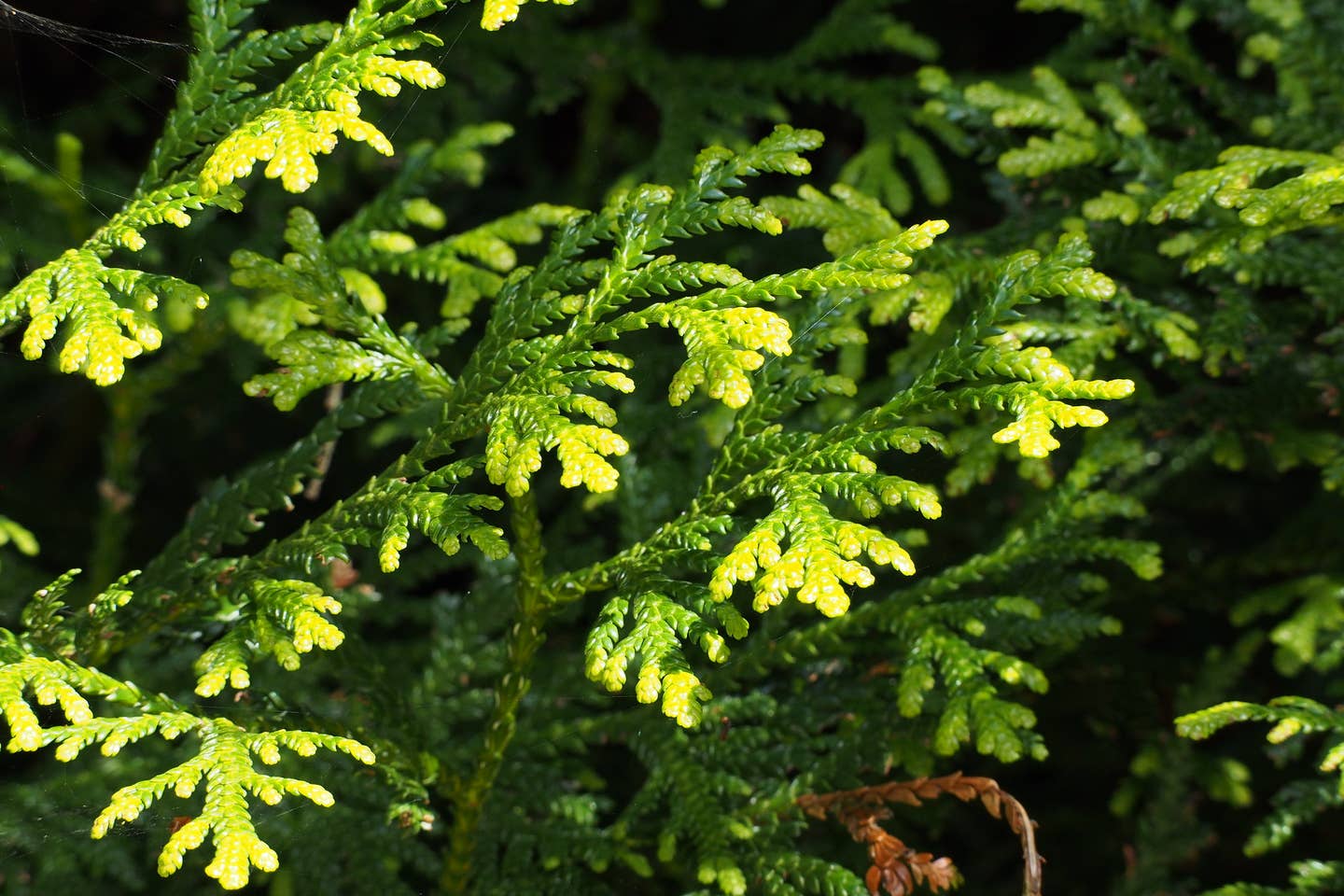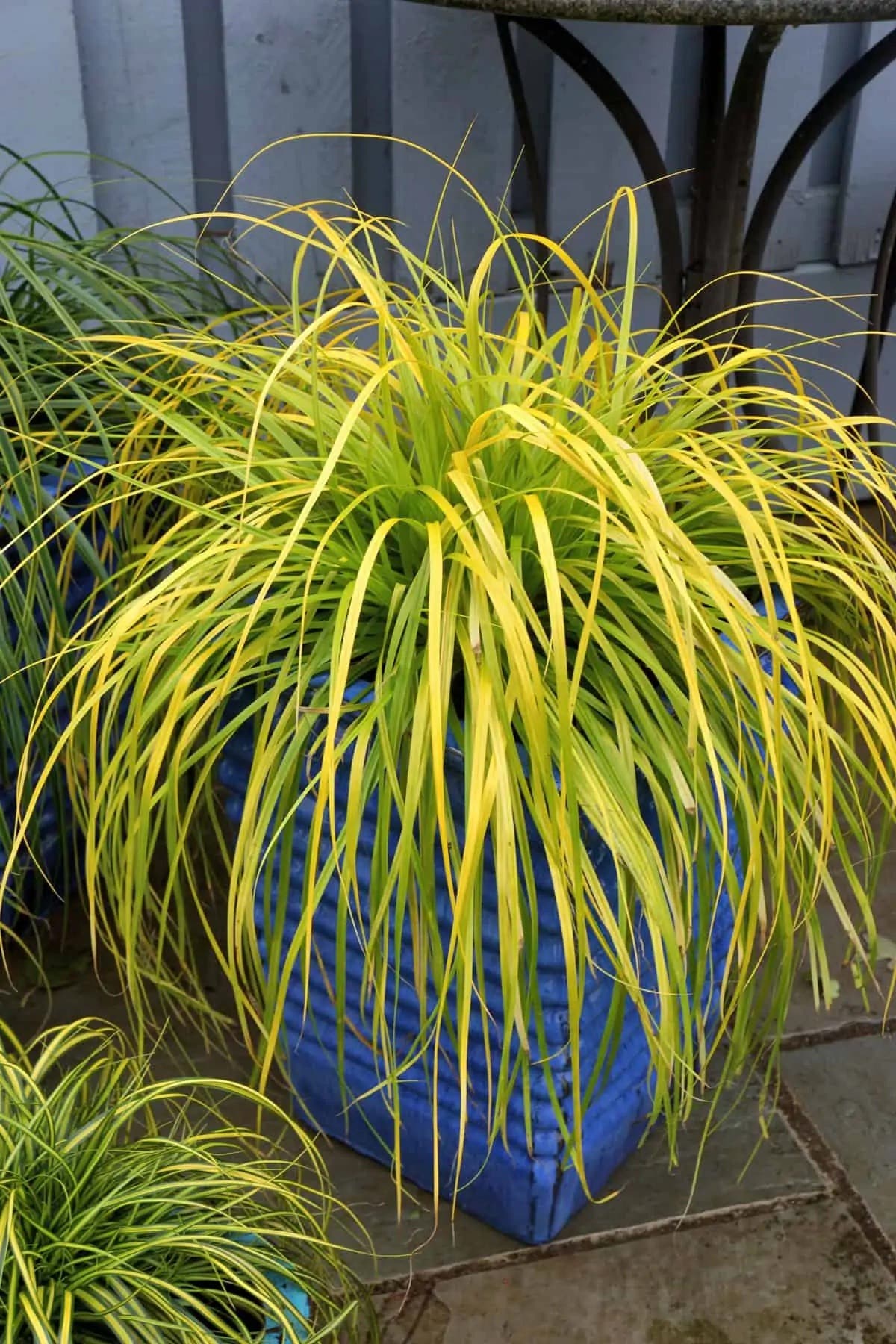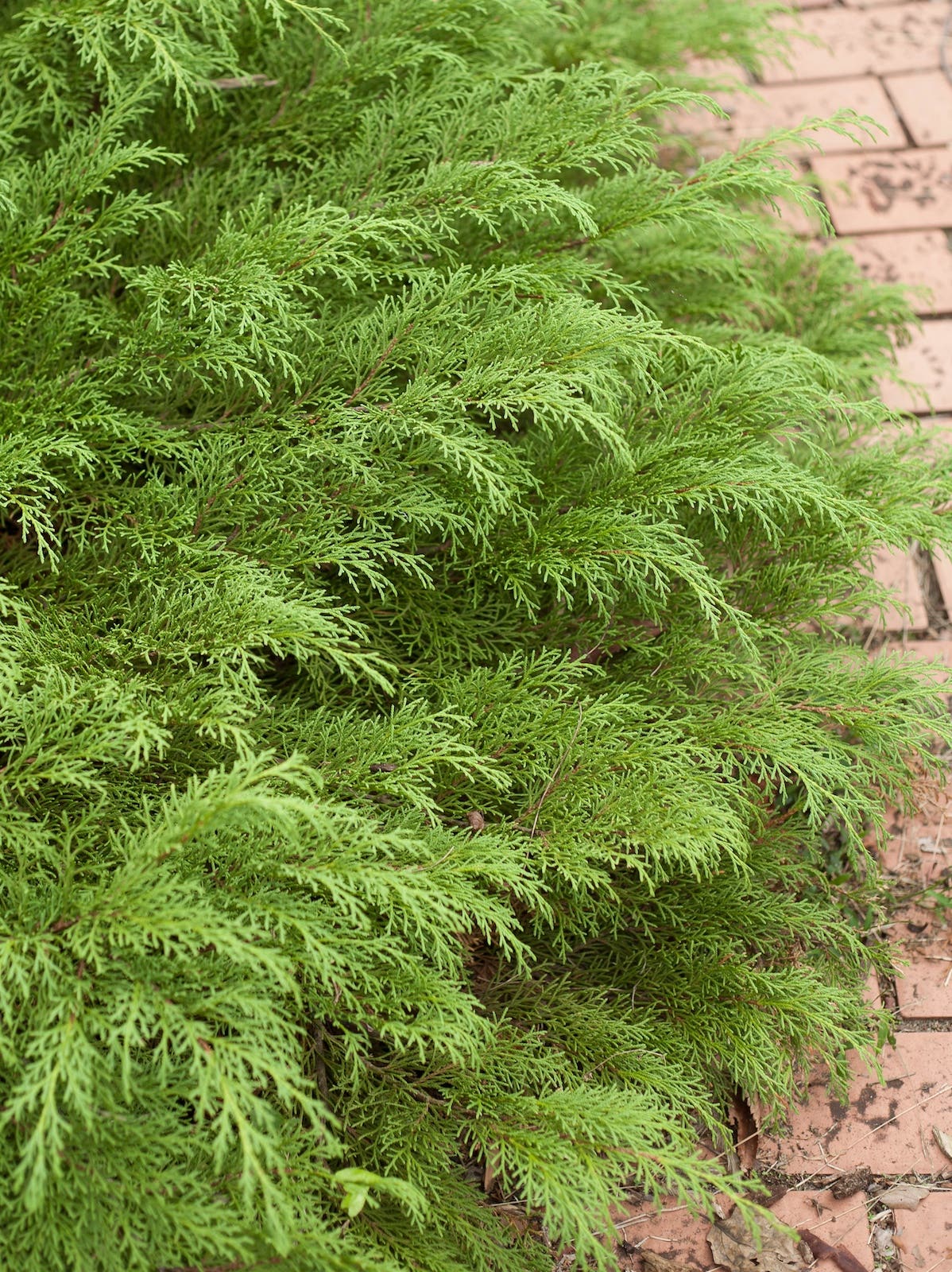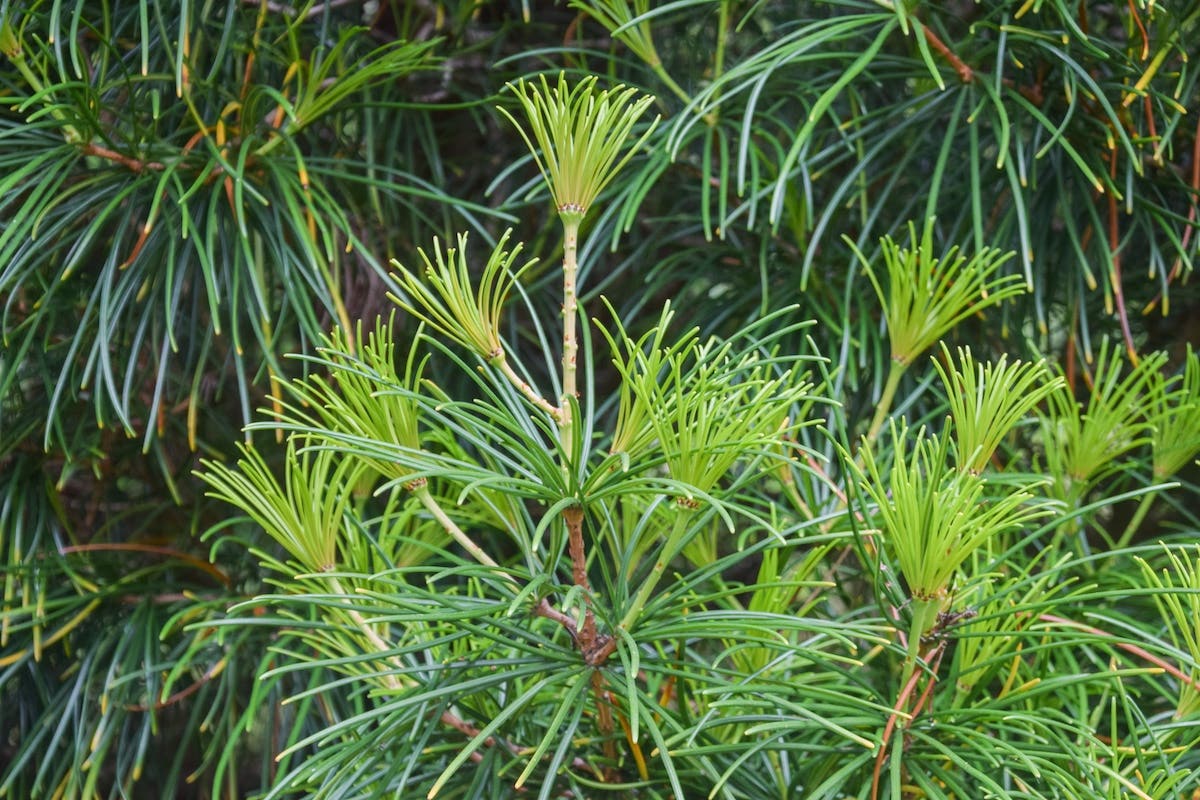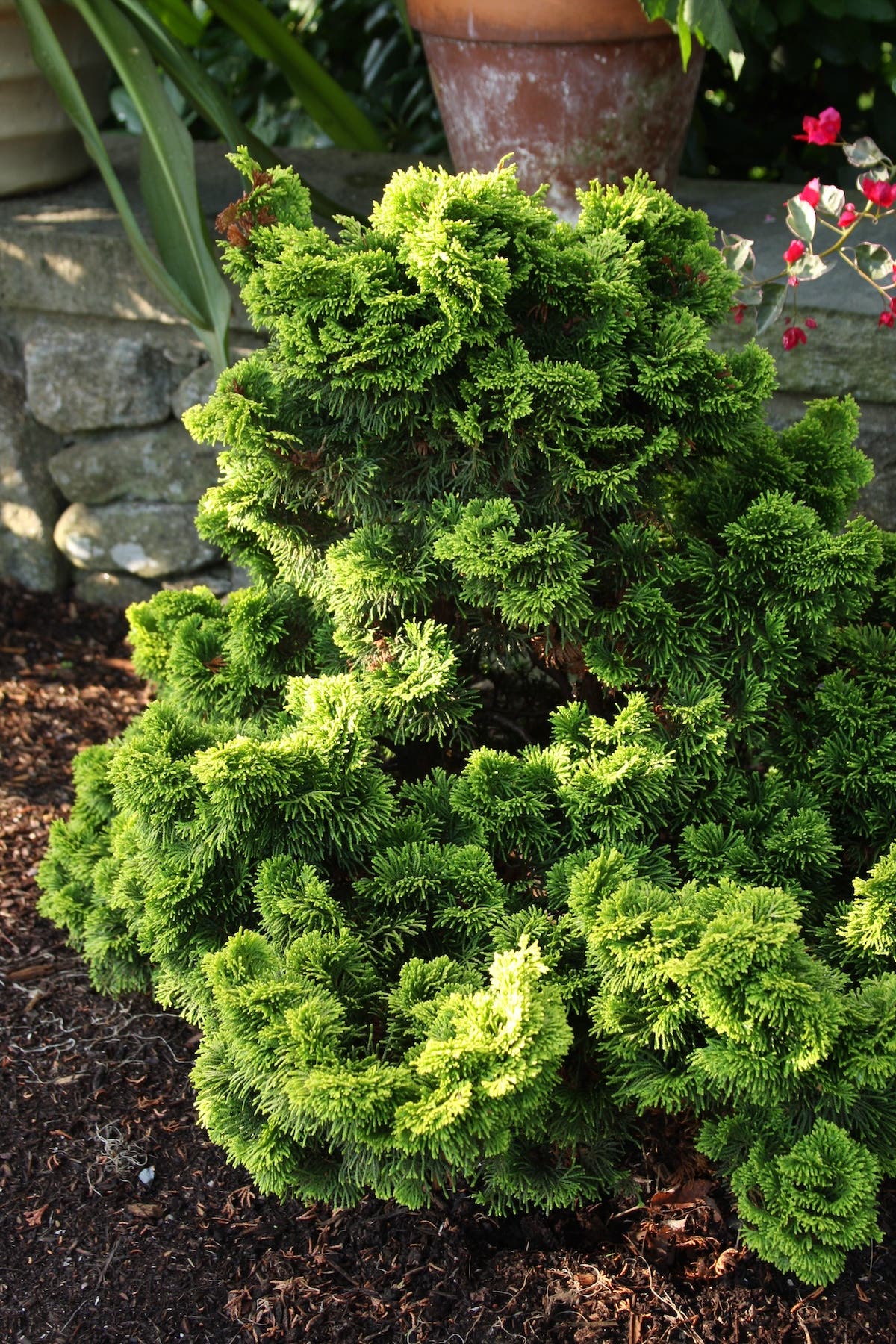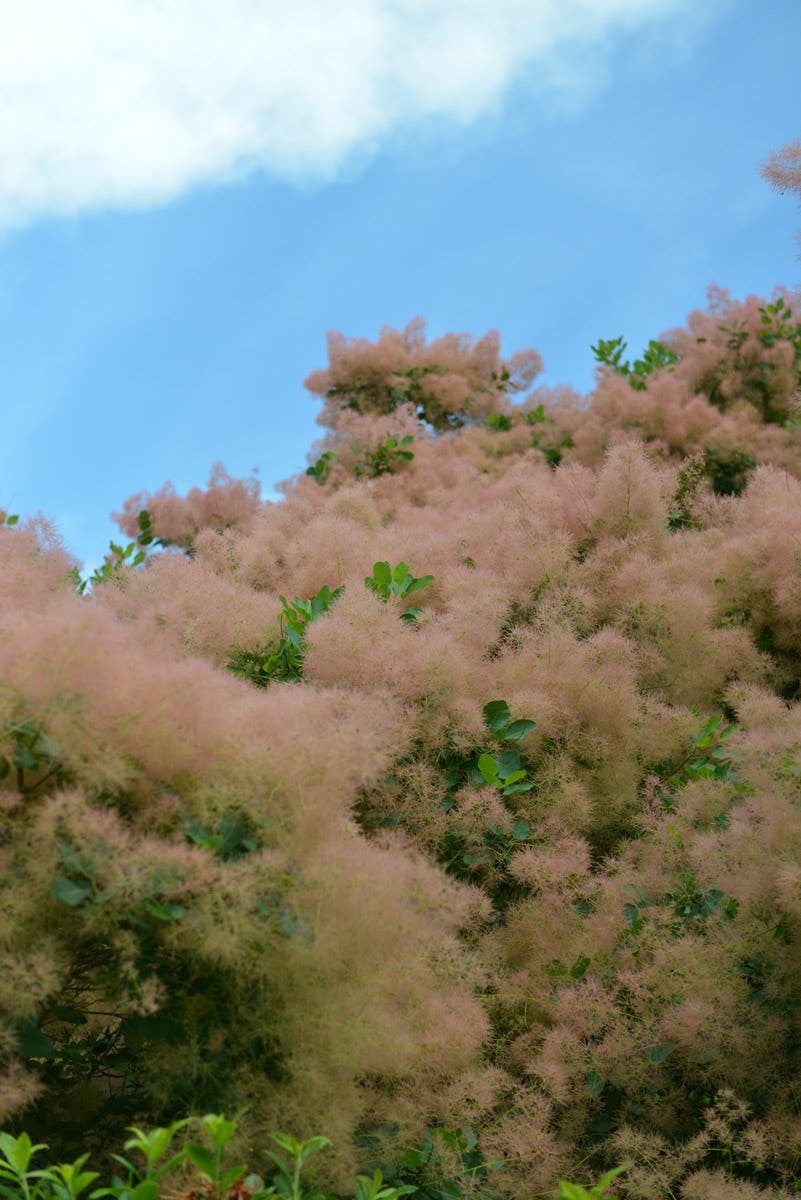Flashes of Color
I have seen the future of siberian irises, and it’s in Carlisle, Massachusetts. . . .
Two Massachusetts hybridizers are dramatically extending the palette of Siberian irises
BY TOM FISCHER PHOTOGRAPHY BY WEBB CHAPPELL
I HAVE SEEN THE FUTURE OF SIBERIAN IRISES, and it's in Carlisle, Massachusetts. Specifically, it's at Joe Pye Weed's Garden, a specialty nursery in this pleasant, leafy town some 20 miles northwest of Boston, owned and run by Jan Sacks and Marty Schafer, a couple with a seemingly inexhaustible fund of knowledge about irises. That goes double for their enthusiasm. This pair practically breathes irises. Over the last 18 years, Sacks and Schafer have developed and released more than 60 Siberian iris hybrids that venture into exciting new realms of color for this group of plants: clear yellows, much deeper than the well-known standard ‘Butter and Sugar’; true, gemlike blues, without the slightest hint of purple, and fascinating, multihued blends, in which amethyst or palest pink or wine red passes subtly into gold, mauve, or purple, sometimes with an overlay of darker veining or a startling smear of turquoise. And they have big plans: redder reds, really pink pinks, even orange and brown.
A PASSION TAKES ROOT
Sacks and Schafer trace their infatuation with Siberian irises to an encounter with Bee Warburton, a well-known hybridizer of bearded and Siberian irises who eventually became their mentor. In 1982, Sacks and Schafer were brand new iris enthusiasts attending their first American Iris Society annual convention, which was being held in Boston. Warburton's garden in Westborough, Massachusetts, was one of the display gardens open to attendees. Unaware of that fact, Schafer and Sacks had telephoned Warburton on their own, hoping for a peek, having found her number and address in the back of Currier McEwen's book The Siberian Iris, and were promptly invited over for a visit. Schafer recalls the occasion in awed tones: “As we drove up her driveway, there was a half-acre of blooming Siberian seedlings—blue, purple, red, pink, white, yellow…She had the Siberian convention guests at her house, and so we got to see everything that was current in Siberian irises. She walked us through the rows of plants and pointed out different things: style arms and branching and bud count and stalk strength and all the good traits that a hybridizer has to look for. And of course we were so dizzy seeing this magnificent display, we were like kids in a candy shop.”
Soon thereafter, Sacks and Schafer began helping out with the transplanting, dividing, and shipping at Warburton's mail-order iris nursery, all the while absorbing practical lessons about how to run a nursery and carting home carloads of Siberian iris seedlings Warburton had given them. (Warburton died in 1996 at the age of 92.) “She also taught us about iris references, about registering seedlings, check lists, and she told us stories about hybridizers and their foibles,” Schafer says.
By 1985, Sacks and Schafer were thoroughly hooked, and began making their own crosses. At the time they were living in Bedford, Massachusetts, and their yard wasn't big enough to sustain a fullscale breeding program. Fortunately, a friend with more land lent them field space. “That first year we made some crosses and lined them out,” Schafer recalls, “and we were thrilled to death with the seedlings we got. We named one of them and used a couple of the others for breeding, and we kept making crosses, and they just kept getting better and more exciting.”
THE NURSERY BLOSSOMS
With their move to Carlisle in 1991, Sacks and Schafer acquired an acre of field space in which to test their new crosses. (In addition to Siberian irises, they also raise versicolor and crested irises, as well as a number of species and interspecific hybrids.) Today, the couple estimates that they make about 120 Siberian crosses each year, and release between six and nine new hybrids. Schafer says that it takes about five years to determine whether a new plant is worth propagating and selling. “The plants bloom either the second or third year from seed,” he says, “and then you have to weed out all the ones whose colors you don't like, or that don't present any breeding possibilities. Then you have to take a year off, because when you transplant the ‘savers” they get set back a little bit. And then you watch them for another year and line them out undefined. If they don't line out, you can't sell them.”
This lengthy trial process pays off, because Sacks and Schafer's Siberians offer more than just floral beauty: their flower stalks are always well branched, so that the plants bloom both heavily and long. In addition, the flowers are always in proportion to the size of the plant, never grossly huge, and they are carried well above the foliage, which remains attractive all season. (The notion that all Siberian irises have good, long-lasting foliage is a myth; many, especially some of the older cultivars, start going to hell soon after they finish blooming.) Couple these traits with the fact that they're tough, undemanding, and long-lived, and you get that sought-after horticultural prize, a “good garden plant.”
What Is a Siberian Iris?
Broadly speaking, “Siberian iris” can refer to any of the 11 beardless species belonging to the series Sibiricae within the subgenus Limniris. In practice, however. Siberian iris is usually applied only to I. sibirica, I. sanguinea, and their hybrids. Although superficially similar. I. sibirica and I. sanguinea do have certain differences that come to the fore when they're used in breeding programs. Iris sanguinea, for example, tends to have larger, more vividly colored flowers than I. sibirica: on the other hand, it also has short stems and poor branching. As a result, hybrids with a large percentage of I. sanguinea genes sometimes produce flowers that get lost among the foliage. In contrast, I. sibirica has lots of buds per stalk, branches freely, and holds its flowers above the foliage. But there's more white–and hence less color–in an I. sibirica flower. Getting the balance just right–large, deeply colored flowers that are held above the leaves on well-branched stalks–is the essence of the hybridizer's art.–T.F.
THE SOCIETY FOR SIBERIAN IRISES
Die-hard devotees may want to join the Society for Siberian Irises, a section of the American Iris Society. Membership is open to all AIS members in the United States and Canada, as well as to iris enthusiasts overseas. Single annual membership is $5.00. The Society publishes a semiannual journal, The Siberian Iris, as well as The Check List of Siberian Irises. An annual meeting is held in conjunction with the AIS national convention. For more information, visit http://w3.one.net/-wilsonjh/ssi.htm, or contact Linda Doffck, 5547 Jacqueline Drive, West Bend, Wl 53095; e-mail LDoffekSSI@aol.com.–T.F.
Facts & Figures
Siberian Irises
TYPE OF PLANT: herbaceous perennial FAMILY: Iridaceae (iris family) ORIGIN:I. sibirica native to southern and westen Europe as far east as Lake Baikal; I. sanguinea native to Siberia, Korea, northeast China, and Japan HEIGHT: most cultivars 24–48 in. LEAVES: narrow, grassy, pointed, mid-green, upright or arching FLOWERS: typical iris form with three more or less upright “standards” and three “falls”, 3–5 in. in diameter, purple, blue, pink, reddish violet, white, yellow, or any combination thereof BLOOM PERIOD: mid-May-June HARDINESS: USDA Zones 3–10; Sunset Zones 1–10, 14–23, 32–45; can be difficult in hot, dry climates EXPOSURE: full sun SOIL: any slightly acidic, well-drained garden loam WATER NEEDS: regular watering needed first established plants can survive brief dry spells FEEDING: one light annual feeding in spring with a balanced fertilizer, if desired PROPAGATION: by division in spring; also possible by seed, but seedlings will differ from parent PROBLEMS: iris borers (control with neem extract or beneficial nematodes, plus thorough garden cleanup in fall); cutworms may attack seedlings (hand pick at night); spider mites, aphids (control with insecticidal soap)
THE NEXT WAVE
So what lies ahead? Sacks and Schafer have already achieved a number of their goals. The blue of their hybrids ‘Riverdance” and ‘Over the River” is so clear and dazzling it could shame a delphinium. The yellow of their 2003 introduction ‘Sunfisher” is rich and glowing, and the flower has an exquisite shape to boot. They've even made progress toward achieving a brown Siberian with ‘Creme Caramel’, also introduced this year.
But there are still new genetic kingdoms to conquer. One of these has to do with those parts of the flower called the style arms, petal-like structures, distinct from the standards and falls, that emerge from the center of the flower and bear the stigmas. As Schafer explains, “Early on we discovered a plant that had beautiful, ornamental, upright style arms. Usually the style arm is very small, plain, and more or less flat and parallel to the ground. The style arms on this plant were large, upright, perpendicular to the ground, and decorated with extra curls. Although the flower as a whole was not very pretty, the style arms were just incredible, and they turned out to be a valuable characteristic that we've been able to pass on to plants with superior flower form.” Examples of this line of breeding are ‘Careless Sally’, a watercolor wash of blue, rose, and yellow, whose style arms are almost baroque in their ornate curlicues, and ‘Sea of Dreams’, a light blue whose ruffled, semi-upright style arms blend blue and aqua like the depths and shallows of a Caribbean lagoon.
Pretty heady stuff. I've already got ‘Over the River’, the serene white ‘Elegance and Simplicity’, and several other Sacks and Schafer irises in my garden, where they contribute mightily to the sparkle of early June. And I can't wait to shock the neighbors with the first truly orange Siberian. Given Sacks and Schafer's track record, it's only a matter of time. H
For sources of plants featured in this article, turn to page 92.
CATALOG/WEB SITE/VISITING
The mail-order catalog for Joe Pye Weed's Garden costs $2.00, which is deductible from your first order. Send requests to Joe Pye Weed's Garden, 337 Acton Street, Carlisle, MA 01741. All current iris offerings can be viewed on their web site: www.geocities.com/jpwflowers (no orders are taken through the web site). The display garden is open by appointment; peak iris bloom time is early to mid-June; call 978–371–0173. There is no onsite sale of plants.
Tips on Growing Siberian Irises
One of the most appealing traits of Siberian irises is that they're so easygoing. “I wouldn't treat them any differently from a heliopsis or phlox or any other standard perennial,” says Marty Schafer. “They don't need regular division, they don't need a lot of food, and they're really hardy [to USDA Zone 3]. They're very well suited to New England, or any place that has well-drained, slightly acid soil, but I've even seen some growing in Los Angeles. Certain older cultivars, like ‘Caesar's Brother’, seem almost indestructible. In the North we recommend spring planting, because it gives them ample time to get established. They definitely need moisture until they become established; you can't just plant them and ignore them through dry spells, the way you can with bearded irises. In areas with really hot summers, like the Southeast, lower Midwest, and Plains states, September planting seems to work well.”–T.F.
5 Border Basics FIFTH IN AN EIGHT-PART SERIES


